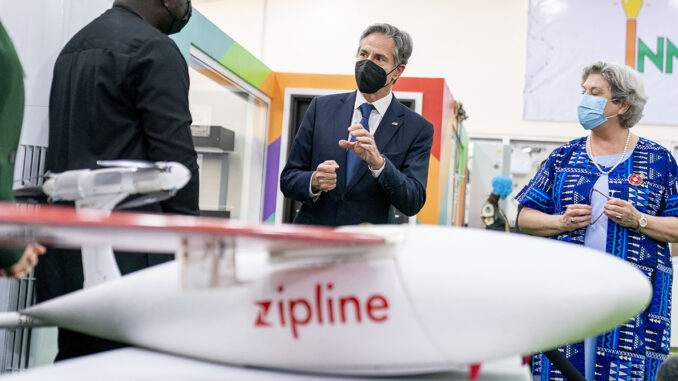
Introduction
Over the past decade, Rwanda has positioned itself as a regional leader in drone integration within civil aviation. From delivering medical supplies to remote areas to supporting disaster response, the country has embraced unmanned aerial vehicles (UAVs) as tools of national development. However, as drone use grows, so does the need for effective oversight mechanisms that ensure safety, privacy, and airspace coordination. This article explores how Rwanda is incorporating drone technology into its broader aviation oversight framework, with a focus on regulatory innovation, stakeholder collaboration, and the challenges of managing unmanned operations in a rapidly evolving airspace.
Rwanda’s Pioneering Role in African Drone Regulation
Rwanda became a continental trailblazer in drone regulation in 2016 when it became one of the first African countries to permit commercial drone deliveries. The partnership between the Government of Rwanda and U.S.-based Zipline allowed the deployment of drones to deliver blood and medical supplies to remote hospitals. This groundbreaking project demonstrated that UAVs could function reliably within a regulated framework that prioritized safety and efficiency.
Following this success, the Rwanda Civil Aviation Authority (RCAA) began to formalize drone oversight by establishing detailed guidelines for drone operation. These regulations address registration, pilot licensing, operational zones, no-fly areas, and coordination with manned aircraft systems. The RCAA has since become a regional reference point for other East African countries seeking to regulate UAV activity.

Framework for Drone Oversight and Safety Integration
Rwanda’s approach to drone oversight is rooted in a risk-based regulatory model. Operators are categorized based on the purpose and complexity of the mission—such as recreational, commercial, humanitarian, or governmental use. Each category requires different safety protocols, with higher-risk operations demanding thorough safety assessments and approval from multiple agencies.
The RCAA’s framework includes:
- Mandatory drone registration through the national UAS portal.
- Pilot licensing and operator training, often in collaboration with institutions like the Rwanda Polytechnic.
- Defined flight corridors and geofencing to protect sensitive infrastructure and populated areas.
- Airspace integration protocols for operations near airports or controlled airspace.
Additionally, Rwanda’s National Intelligence and Security Service is involved in reviewing high-risk drone flight applications, reflecting a holistic oversight approach that accounts for both civil and national security concerns.
Coordination Between Civil and Military Airspace
One of the significant challenges in integrating drones into civil aviation oversight is coordinating operations between civil authorities and military-controlled airspace. In Rwanda, this issue is addressed through the Joint Airspace Coordination Committee, a multi-agency platform involving the RCAA, Rwanda Defence Forces, and the Ministry of ICT and Innovation.
This committee ensures that drone flight plans are vetted across all relevant bodies, especially for missions near sensitive areas like border zones or government buildings. This model of collaborative airspace governance reduces the risk of mid-air conflicts and helps maintain national security while supporting innovation.
Role of Technology and Data Management
The success of Rwanda’s drone oversight system is closely tied to its use of digital tools. A centralized UAS traffic management (UTM) system enables authorities to monitor flights in real time. Operators are required to upload flight plans and telemetry data, allowing the RCAA to track drones during their missions and quickly respond to deviations.
Furthermore, Rwanda has begun experimenting with automated remote identification systems for drones, which help differentiate between authorized and unauthorized aircraft. This system is particularly important in Kigali, where urban drone use has increased significantly for infrastructure monitoring, mapping, and media production.
Public-Private Partnerships and Innovation Ecosystem
Rwanda’s drone regulatory strategy is reinforced by an active ecosystem of public and private partnerships. The Drone Operations Center at the Kigali Innovation City hosts training programs, startups, and researchers focused on UAV technologies. Organizations like Charis UAS, a Rwandan drone company, are collaborating with government agencies to conduct mapping, agricultural monitoring, and search and rescue operations.
These partnerships contribute to regulatory refinement by offering insights into operational challenges and technological developments. The government’s commitment to fostering a supportive business environment for drone innovation has been essential in maintaining regulatory relevance and promoting safety standards.
Challenges and Areas for Improvement
Despite Rwanda’s successes, several challenges remain in fully integrating drones into civil aviation oversight. These include:
- Capacity constraints within the RCAA to monitor and approve the growing number of drone operations.
- Limited airspace separation tools for managing mixed traffic in high-density zones.
- Cross-border drone operations, which raise concerns about sovereignty, coordination, and data sharing among neighboring countries.
- Cybersecurity risks, especially with the increasing use of drones for data collection and surveillance.
Moreover, enforcement of regulations in rural or informal settings remains inconsistent, highlighting the need for broader public education and law enforcement engagement.
Regional Influence and Future Outlook
Rwanda’s approach has inspired similar efforts in neighboring countries, many of which have sent delegations to study the country’s regulatory model. Through its participation in the East African Community (EAC) and African Union drone policy dialogues, Rwanda is contributing to the development of regional drone oversight frameworks.
Looking ahead, Rwanda plans to expand its use of AI-powered flight management, introduce eVTOL-friendly zones, and support the development of regional drone corridors to link East African capitals. The country is also advocating for standardized drone pilot certifications within the EAC region to facilitate interoperability.
Conclusion
Rwanda’s integration of drone technology into civil aviation oversight demonstrates how innovation, safety, and regulation can coexist. Through strategic planning, stakeholder collaboration, and technological adoption, the country has built a model for responsible UAV governance in Africa. While challenges remain, Rwanda’s experience offers valuable lessons for East African nations looking to embrace drones without compromising aviation safety.


